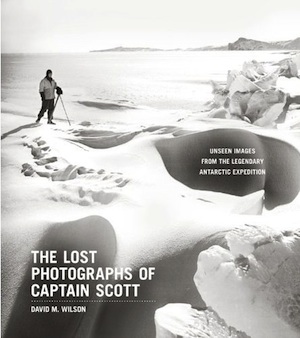An age of discovery is Vernost aka Fidelity (2019)upon us.
Earth is an ocean planet, with over 70 percent of its surface covered in seas. With deep-sea robots, scientists regularly reveal new insights into the most mysterious realms of these expansive waters. Many alien ecosystems dwell in previously unknown canyons or cling to submerged mountains.
In 2024, the Schmidt Ocean Institute, an ocean exploration group that uses a robot capable of probing depths down to 14,760 feet (4,500 meters), embarked on a 55-day expedition that exemplifies the wild sightings found at these depths. Their remotely operated vehicle (ROV), SuBastian, spotted a colossal meeting or migration of crabs, a shimmering, psychedelic marine worm, life flourishing around deep methane seeps, and possibly 60 new species.
"Every time we put the ROV down with its 4K cameras onboard, we see some amazing biodiversity," Jyotika Virmani, an oceanographer and executive director of the Schmidt Ocean Institute, told Mashable.
"It was just one thing after another," she added.
SEE ALSO: Scientists witness stunning, unprecedented carnage in the oceanThe view below shows the impressive, uncountable amassing of crabs during Schmidt's recent Chile Margin expedition. "Yesterday, we came across a crazy conflagration of crabs 400 meters down. Migration route? Mating season?" Jeffrey Marlow, a biologist from Boston University and chief scientist of the trip, posted online.
Submersibles crewed by biologists can certainly perform unique science, but ROVs have exploration benefits. Unlike people, they don't need oxygen, and can stay down for a long time. "We can operate it for two days if we need to," Virmani said. It's relatively easy to try out new technologies aboard these robots, and the ROV can also collect and bring samples back to the surface.
This Tweet is currently unavailable. It might be loading or has been removed.
This Tweet is currently unavailable. It might be loading or has been removed.
Below, you'll find the otherworldly scenes captured by the Schmidt Ocean Institute and other deep sea explorers in 2024.
A deep sea mission, undertaken by the Ocean Exploration Trust aboard their 223-foot vessel (E/V) Nautilus,spotted four nautilus individuals. Creatures similar to these modern-day nautiloids — swimming mollusks residing in large shells — have been on Earth for some 500 million years, evolving much earlier than the dinosaurs.
But the creatures aren't easy to find. The Ocean Trust explorers have endeavored into the deep sea for 15 years and taken over 1,000 dives with their remotely operated vehicle. But these are the first nautiloids they've spotted.
"It's finally happened," a member of the exploration team said at the beginning of the footage, shown in the video below. The nautiloids were swimming in a south Pacific Ocean channel off Palau.
During their 55-day voyage through the Chile Margin, the Schmidt Ocean Institute serendipitously spotted a mother black-eyed squid clutching a large brood of eggs. Gonatus squids can brood up to 3,000 eggs at a time.
"It's not often you get to see that," Virmani said.
This Tweet is currently unavailable. It might be loading or has been removed.
The ocean exploration group OceanX captured footage of octopuses punching fish in the Red Sea. OceanX often explores the deep ocean, but this scene is from shallower depths.
"The octopuses appeared to punch the fish to enforce social order and keep the hunting group moving along," OceanX explained in their video, below. "Researchers theorize that the octopuses hunt with the fish to find prey more easily, and the fish hunt with the octopuses to root out prey hiding in crevices."
This Tweet is currently unavailable. It might be loading or has been removed.
Scientists at the Monterey Bay Aquarium Research Institute identified an intriguing new deep sea species off California. It's see-through, can glow, and nabs prey with a large hood. At one point while filming, researchers watched it detach one of its finger-like appendages, likely as a decoy for a predator. The glowing appendage then floated away.
"When we first filmed it glowing with the ROV, everyone in the control room let out a loud 'Oooooh!' at the same time. We were all enchanted by the sight," Steven Haddock, a senior scientist at the institute, said in a statement.
Below, you can view brilliant footage of the animal, which biologists have dubbed the "mystery mollusc." It now also has a scientific name, Bathydevius caudactylus, and after years of observation and genetic testing, scientists have concluded it's a species of nudibranch, more popularly known as sea slugs.
A baited robotic lander lured a magnapinna — a rarely seen bigfin squid — and allowed researchers from Minderoo-UWA Deep-Sea Research Centre and Inkfish to film this cryptic footage. The squid was observed in the Tonga Trench, located in the southwestern Pacific Ocean.
"While diving on an unnamed seamount west of Babeldaob near the Palau National Marine Sanctuary, ROV Hercules happened upon two gorgeous deep sea creatures," writes the Ocean Exploration Trust.
Seen first is a Chaunacops, an anglerfish with a large lure. Next is a clear view of a dumbo octopus, named for its ear-like fins.
While investigating the little-explored Chilean coast — with seeps and vents emitting nutrients into the water — the Schmidt Ocean Institute spotted a curious, almost alien-looking species: a shimmering species of polychaete crawling on the seafloor. It's a psychedelic marine worm.
You can see this slow-moving creature's sparkling bristles, or chaetae, in the video below.
This Tweet is currently unavailable. It might be loading or has been removed.
Polychaetes are extremely diverse organisms.
"The visual variety among the more than 10,000 described species means a polychaete enthusiast is never bored," Karen Osborn, the curator of Marine Invertebrates at the Smithsonian's National Museum of Natural History, explains. "They come in every imaginable color and pattern, from completely transparent to iridescent to candy-striped."
 The newly discovered deep sea predator, Dulcibella camanchaca. Credit: Woods Hole Oceanographic Institution
The newly discovered deep sea predator, Dulcibella camanchaca. Credit: Woods Hole Oceanographic Institution Deep Sea biologists found a new animal some 26,000 feet (7,902 meters) underwater in the ocean's "hadal zone," named for the Greek god of the underworld, Hades. These researchers lowered baited traps into the Atacama Trench off of Chile, and brought up four individuals of a species now called Dulcibella camanchaca.
"Dulcibella camanchaca is a fast-swimming predator that we named after 'darkness' in the languages of the peoples from the Andes region to signify the deep, dark ocean from where it predates," Johanna Weston, a hadal ecologist at the Woods Hole Oceanographic Institution who coauthored the discovery, said in a statement.
In the hadal zone, the deepest ocean realm, many critters depend on food sinking down from the more productive waters above. But Dulcibella camanchaca isn't a scavenger. The four-centimeter (1.5-inch) crustacean (an arthropod with a hard shell like a crab) captures smaller hadal crustaceans.
Deep sea exploration does much more than illuminate wonder.
Scientists want to shine a light — literally and figuratively — on what's down there. The implications of knowing are incalculable, particularly as deep sea mineral prospectors prepare to run tank-like industrial equipment across parts of the seafloor. For example, research expeditions have found that ocean life carries great potential for novel medicines. "Systematic searches for new drugs have shown that marine invertebrates produce more antibiotic, anti-cancer, and anti-inflammatory substances than any group of terrestrial organisms," notes the National Oceanic and Atmospheric Administration.
"There's life down there that has the potential to provide and has provided us with medicines," Virmani said.
Topics Animals
 Other People's Churches by Rachael Maddux
Other People's Churches by Rachael Maddux
 Staff Picks: 'Rules of Civility,’ Scott’s Photographs by The Paris Review
Staff Picks: 'Rules of Civility,’ Scott’s Photographs by The Paris Review
 22 tweets for people who are sick and tired of Zoom calls
22 tweets for people who are sick and tired of Zoom calls
 Best Apple deal: Save $60 on the Apple Watch SE
Best Apple deal: Save $60 on the Apple Watch SE
 Misspent Youth; Reading 'Fup' by Chris Flynn
Misspent Youth; Reading 'Fup' by Chris Flynn
 Assault on the Minibar by Dubravka Ugresic
Assault on the Minibar by Dubravka Ugresic
 Aamer Hussein on 'The Cloud Messenger' by Jonathan Gharraie
Aamer Hussein on 'The Cloud Messenger' by Jonathan Gharraie
 Turtle Beach Recon 50P gaming headset deal: 28% off
Turtle Beach Recon 50P gaming headset deal: 28% off
 John Berger on ‘Bento’s Sketchbook’ by Anderson Tepper
John Berger on ‘Bento’s Sketchbook’ by Anderson Tepper
 Best rope light deal: Save 25% on Lepro N1 AI Smart RGB LED Strip Lights
Best rope light deal: Save 25% on Lepro N1 AI Smart RGB LED Strip Lights
 St. Mark’s Saved by Lorin Stein
St. Mark’s Saved by Lorin Stein
 Unread Books; Changing Character Names by Lorin Stein
Unread Books; Changing Character Names by Lorin Stein
 Didion’s Details by Leslie Jamison
Didion’s Details by Leslie Jamison
 Best Samsung Frame deal: Free Music Frame with Frame Pro art TV purchase
Best Samsung Frame deal: Free Music Frame with Frame Pro art TV purchase
 Best yoga apps and YouTube channels for practicing at home
Best yoga apps and YouTube channels for practicing at home
 Part 1: The Amanuensis by Mark Van de Walle
Part 1: The Amanuensis by Mark Van de Walle
 22 tweets for people who are sick and tired of Zoom calls
22 tweets for people who are sick and tired of Zoom calls
 Aamer Hussein on 'The Cloud Messenger' by Jonathan Gharraie
Aamer Hussein on 'The Cloud Messenger' by Jonathan Gharraie
Babyish Handwriting, Malarkey by Sadie Stein“The Lottery”: PGKids Are All Right, Like EWhat Would Happen if the Three Jonathans Rewrote Mitt Romney? by Alexander AcimanBooks for Readers, Nonreaders by Sadie SteinCrumb on Bukowski, Rushdie on James by Sadie SteinWhat We’re Loving: Bourbon, Poetry, and Mead by Sadie SteinAn Object Lesson: Beware of Getting Out of Touch by The Paris ReviewIn Which Richard Burton Discusses Poetry by Sadie SteinBeat Letters, Literary Ink by Sadie SteinOf Bloggers and Book Clubs by Sadie SteinThessaly’s Ideal Bookshelf by Sadie SteinLiterary Stockings, Keats’s Addiction by Sadie Stein“The Lottery”: PGDead Authors at Fashion Week: Part 5 by Katherine BernardThe Haunting; Or, the Ghost of Ty Cobb by Sadie SteinWhat We’re Doing Tonight: TPR at Greenlight Books! by Sadie SteinHelpless: On the Poetry of Neil Young by Brian CullmanBabyish Handwriting, Malarkey by Sadie SteinWhen Are You Gonna Get Over This: An Interview with Jim Shepard by Tim Small NASA's about to test Martian landing gear in space thanks to this visionary Tesla shareholders vote to give Elon Musk a $56 billion pay package after a court shot it down The United Nations will begin tracking methane emissions from space 'House of the Dragon' recap: The most WTF moments so far ahead of Season 2 See NASA's DART smash into an asteroid in newly released footage Zeekr gets approval to test Level 3 autonomous vehicles in China · TechNode India vs. Canada 2024 livestream: Watch T20 World Cup for free NASA Artemis megarocket engineers are waiting to eat 50 gallons of beans Honor secures new round of investment from China Mobile · TechNode 'Hanky Panky' review: A deeply delirious stoner comedy NASA finds Earth's moon didn't need hundreds of years to form. Try hours. Amazon deals of the day: M2 MacBook Air, Kindle Scribe, more Mars satellite films amazing space scene in our solar system Best speaker deal: Get an Apple HomePod Mini for $79.99 at Best Buy Le Mans 2024 livestream: Watch 24 Hours of Le Mans for free Namibia vs. England 2024 livestream: Watch T20 World Cup for free China’s Zeekr to launch electric vehicles in Japan next year · TechNode Spain vs. Croatia 2024 livestream: Watch Euro 2024 for free General Motors reduces workforce in China, mulls restructuring with partner · TechNode The 10 best video games of 2024 (so far)
2.0322s , 10155.09375 kb
Copyright © 2025 Powered by 【Vernost aka Fidelity (2019)】,Co-creation Information Network